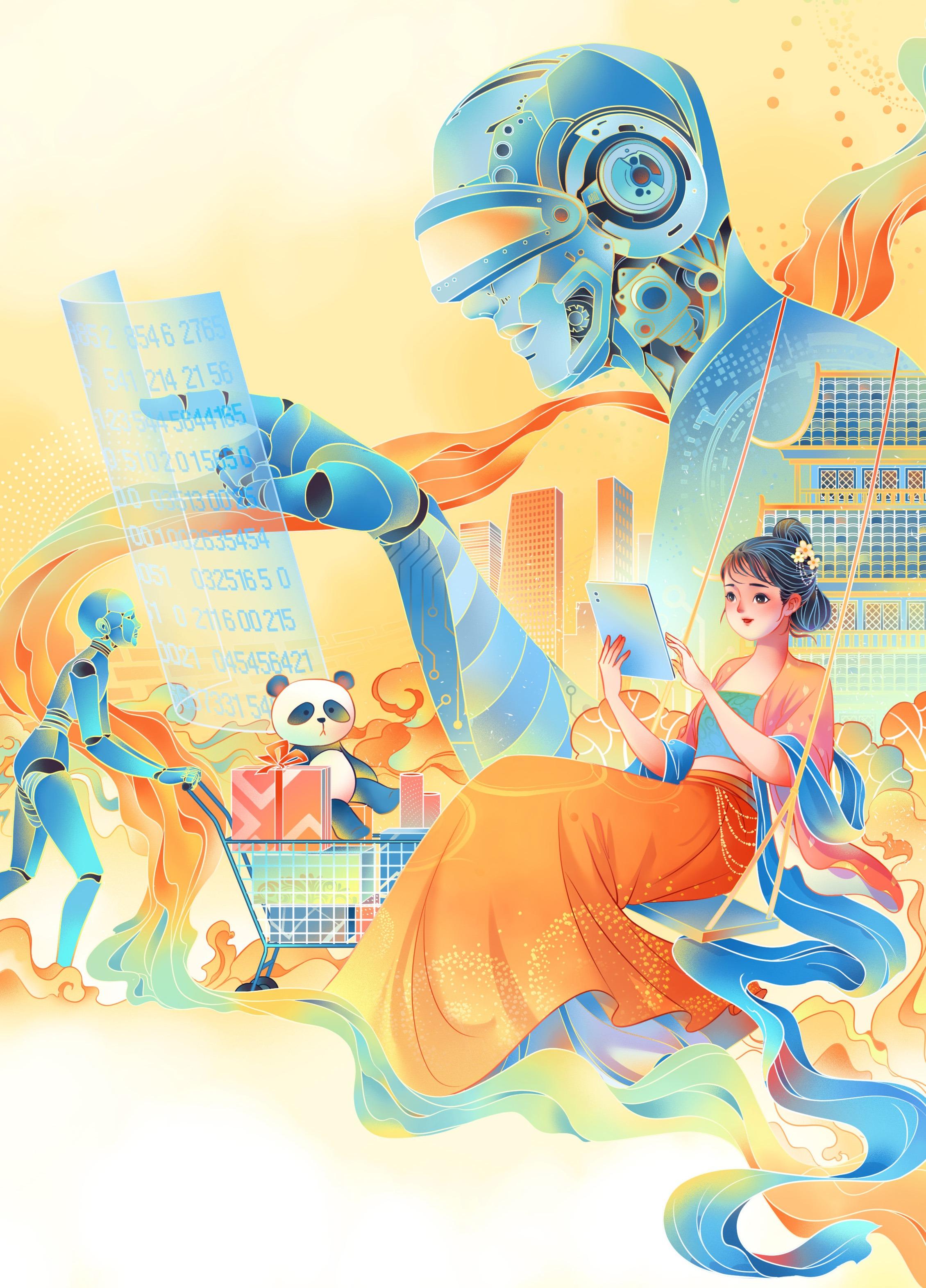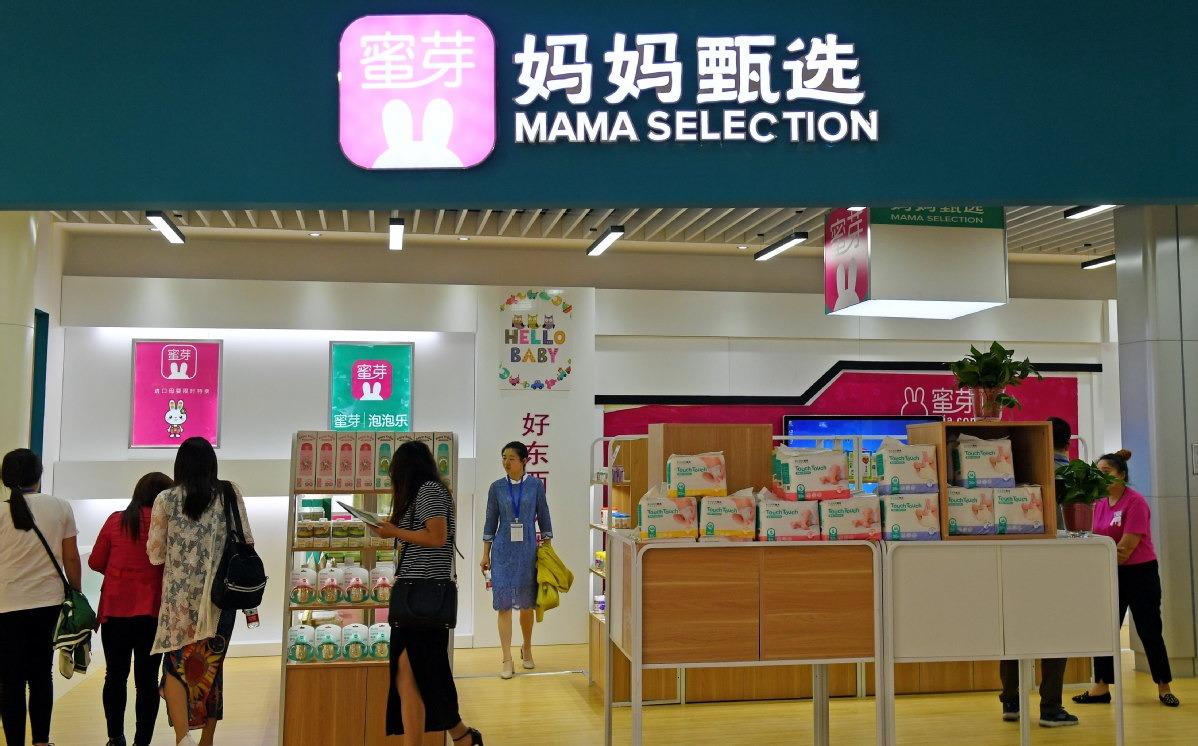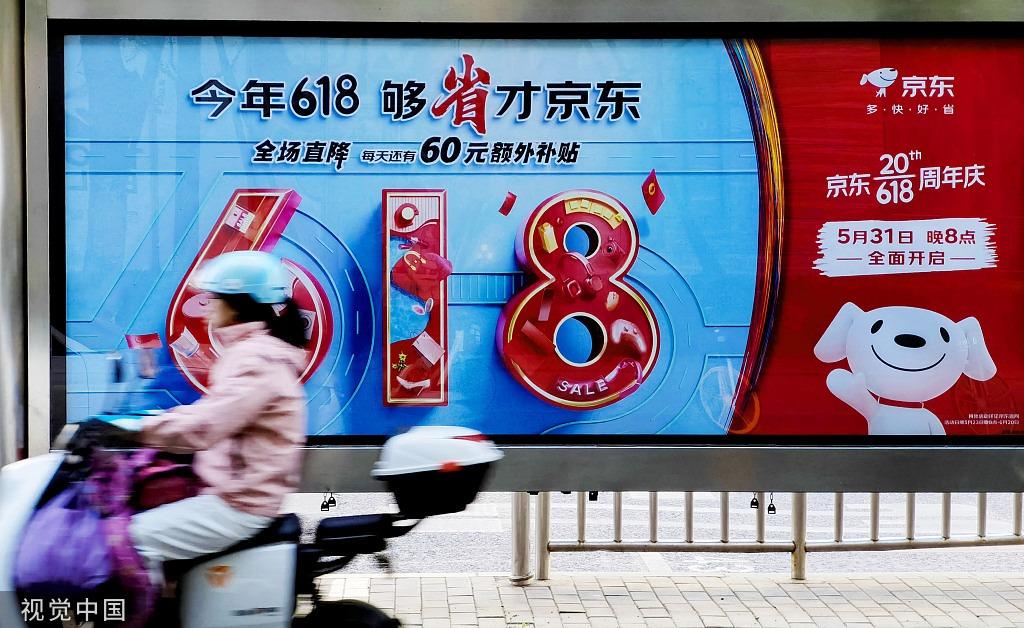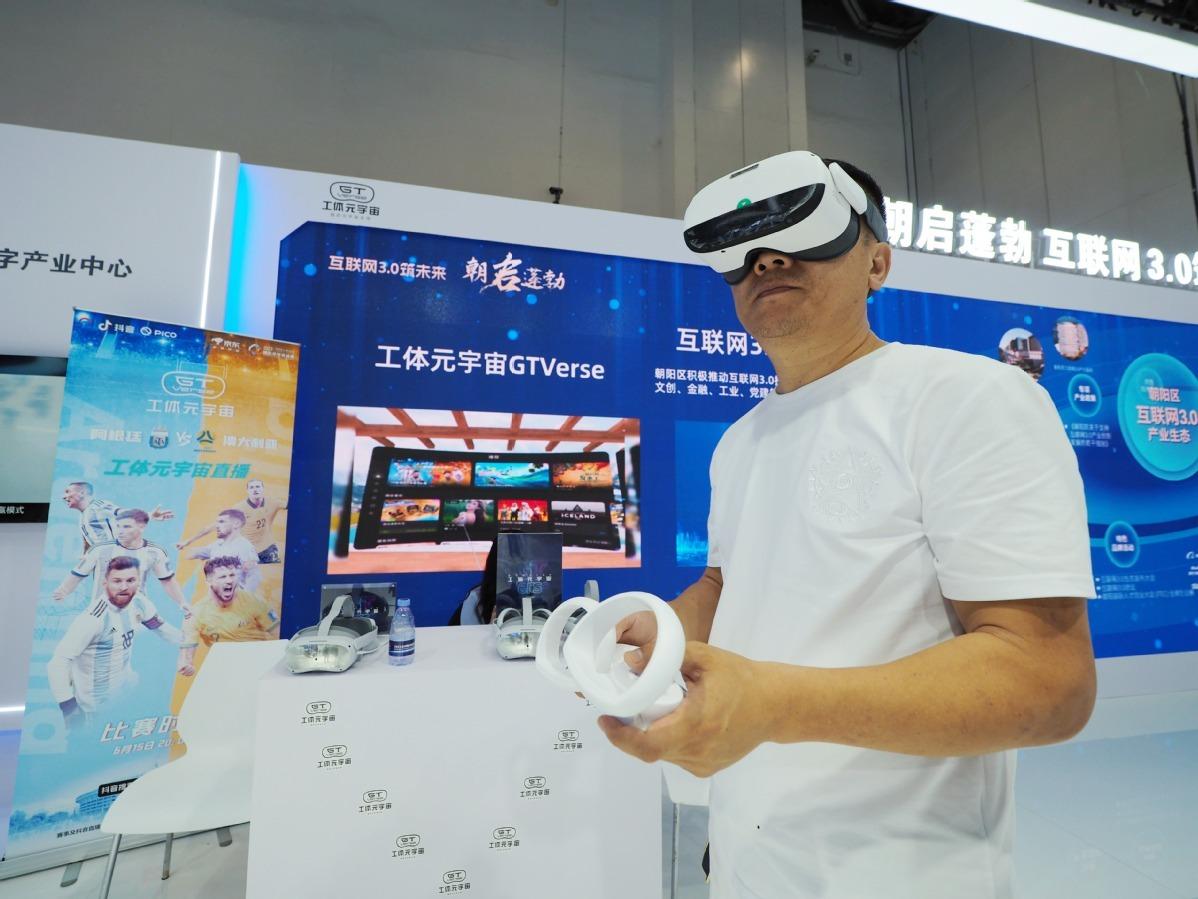Industrial internet is helping manufacturers, retailers provide tailor-made products
 (XING WEI / FOR CHINA DAILY)
(XING WEI / FOR CHINA DAILY)
Zhang Jing, 33, a middle school teacher from Taiyuan, the capital of Shanxi province, recently sent a customized air conditioner as a birthday gift to her calligraphy-loving father as a scorching heat wave hit many parts of North China.
With just a few taps on her mobile phone, she chose the functions, appearance and design her father likes.
The new consumption model will continue to evolve with the indepth application of new technologies such as 5G, cloud computing and artificial intelligence, mainly driven by a new round of technological revolution.
Guan Lixin, deputy director of the Distribution and Consumption Institution at the Chinese Academy of International Trade and Economic Cooperation
Zhang said that once she placed the order with home appliance manufacturer Haier Group, the company began making the air conditioner, which also had her father's favorite phrase "Tian dao chou qin", or "God rewards the diligent", embossed on it.
"My father liked this birthday gift so much that he invited his friends over for a look. The price of this personalized air conditioner was about 150 yuan ($21) higher than a regular one with similar functions," she said.
Zhang is among the growing group of Chinese consumers who are driving surging demand for customized commodities and who want to have a bigger say in the design, features and functions of products.
Demand for these new products is being met by cutting-edge digital technologies that are reshaping the operations and strategies of Chinese manufacturers and online retailers.
Among the new products hitting the market are nappies designed to minimize skin rashes and refrigerators that keep food fresh and healthy, a popular customer requirement following the COVID-19 pandemic.
Industry experts said the days when consumers are solely passive buyers are over, with next-generation information technologies creating new intelligent and green consumer goods and fostering fresh consumption growth areas.
"The new consumption model, which centers on consumers' requests and places an emphasis on personalized, tailor-made and experience-based consumption, will play an important role in expanding domestic demand and taking the lead to promote the recovery of China's economy," said Hong Yong, an associate research fellow at the e-commerce research department of the Ministry of Commerce's research institute.
This revolutionary approach is being made possible by the industrial internet — a new type of manufacturing automation that combines advanced machines, internet-connected sensors and big data analysis. The new approach is also bolstering the transformation and upgrading of the traditional manufacturing sector.
The Haier Group has built an industrial internet platform, COSMOPlat, which allows enterprises to customize products quickly, and at scale, by collecting and analyzing data from consumers, suppliers and factories with internet-connected information sensors. The new process also boosts productivity and cuts costs.
Customers can choose the functions, appearance and design of home appliances by using their mobile phones, removing the need to visit a brick-and-mortar sales store.
Once a customer has placed an order, intelligent manufacturing equipment at Haier's interconnected factories automatically reads the information and starts production of the tailor-made item, the company said.
At the company's washing machine manufacturing plant in Tianjin, productivity has improved by about 30 percent, while energy consumption has been reduced by 35 percent. This has been achieved through the application of 5G technology, the internet of things, automation and advanced analysis technology, the company said.
 Consumers browse products at a Mia store in Zhengzhou, capital of Henan province. (MA JIAN / FOR CHINA DAILY)
Consumers browse products at a Mia store in Zhengzhou, capital of Henan province. (MA JIAN / FOR CHINA DAILY)
C2M model
China's industrial internet sector has developed rapidly in recent years. According to the Ministry of Industry and Information Technology, China has developed over 240 industrial internet platforms that have strong regional and industry influence. More than 81 million industrial equipment units are connected to the platforms, which serve 250,000 enterprises covering over 40 key industries.
To meet consumers' growing and diverse demand for products, a string of e-commerce platforms have launched tailor-made and new products in collaboration with domestic and foreign consumer goods brands.
E-commerce giant JD is betting big on the consumer-to-manufacturer, or C2M, model, which leverages online retailers' big data and customer analysis to customize products that meet consumers' demands.
The C2M products represent the latest consumption trends, as they are designed based on what consumers want, the company said. For instance, using data analysis of online searches and comments, JD found that users often searched for specific keywords like "diaper rash", and look for diapers that feature better skin care.
Based on big data and consumer preferences, the company cooperated with a baby diaper brand to jointly develop new paper diapers with enhanced aeration and softness that are more comfortable for babies to wear. The new product accounted for more than 70 percent of the brand's sales on JD the day it went on sale.
Since the outbreak of COVID-19, more and more customers are focusing on refrigerators with functions such as flavor preservation, sterilization and the ability to maintain freshness. JD has been working with household appliance manufacturers including TCL, Midea and Bosch to develop C2M refrigerators to meet customers' tailored demands, and also increase the popularity of home appliances that feature innovative technologies.
The new consumption model is pivotal to stimulating consumers' purchasing appetite, bolstering the intelligent transformation and upgrade of traditional industries, and creating more job opportunities for high-skilled talent, said Hong from the commerce ministry.
He said greater efforts were needed to improve the quality and influence of Chinese-made consumer goods by introducing overseas experience and advanced technologies. The application of new digital technologies in more fields should be accelerated, Hong added.
Guan Lixin, deputy director of the Distribution and Consumption Institution at the Chinese Academy of International Trade and Economic Cooperation, said, "The new consumption model will continue to evolve with the in-depth application of new technologies such as 5G, cloud computing and artificial intelligence, mainly driven by a new round of technological revolution."
The new consumption model will also become a key driving force in the dual-circulation development pattern, which takes the domestic market as the mainstay while letting domestic and foreign markets reinforce each other, Guan added.
Gen Z consumers — those born between the mid-1990s and the early 2010s — have developed their own distinct personalities and ideas, and prefer to pursue niche lifestyles and customized products, Guan noted. They are emerging as mainstream consumers who are driving the growth of new products.
 In this file photo dated May 22, 2022, a woman rides past an advertisement for e-commerce giant JD's 618 online shopping festival in Beijing. (PHOTO PROVIDED TO CHINA DAILY)
In this file photo dated May 22, 2022, a woman rides past an advertisement for e-commerce giant JD's 618 online shopping festival in Beijing. (PHOTO PROVIDED TO CHINA DAILY)
Bright spot
Consumption has become a major driver of China's economic growth. China's retail sales — a significant indicator of consumption strength-grew 12.7 percent year-on-year in May, compared with 18.4 percent in April, data from the National Bureau of Statistics showed.
In the January-May period, the country's retail sales increased 9.3 percent year-on-year to 18.76 trillion yuan ($2.6 trillion), the NBS said. Moreover, online consumption remained a bright spot as online retail sales rose 13.8 percent on a yearly basis in the first five months of the year.
The tone-setting Central Economic Work Conference in mid-December said in 2023 China will focus on boosting domestic demand by prioritizing the recovery and expansion of consumption.
"With the optimization of COVID-19 response measures, the confidence of both consumers and market entities has been further boosted, and services-based consumption segments that were hard hit by the pandemic have recovered at a faster pace," said Wang Yun, a researcher at the Academy of Macroeconomic Research, which is affiliated with the National Development and Reform Commission, the country's top economic regulator.
China's consumer market has maintained growth momentum, with the overall growth rate expected to reach more than 7 percent this year, Wang said. Chinese consumers have become more rational and are carefully reviewing their needs, with a key focus on the quality and value of the products they buy, as well as the feelings associated with making a purchase, she noted.
Greater efforts should be made to boost the sales of new energy vehicles in rural areas, accelerate the building of NEV charging infrastructure and provide more support for the recovery of services-based consumption sectors, including tourism and culture, she added.
The recently concluded June 18 shopping carnival, which spans more than three weeks, played a vital role in promoting the recovery of consumption and boosting the economy, experts said.
JD, which initiated the midyear promotional event, said 30 percent of domestic brands saw turnover surge 100 percent year-on-year in the first 10 minutes of the final promotion that kicked off at 8 pm on June 17.
Consumers showed strong interest in a new generation of products featuring innovative technologies. Transaction volume of 4K projectors and augmented reality devices jumped 200 percent and 150 percent, respectively, on a yearly basis, JD said.
Data from Alibaba's Taobao and Tmall platforms showed that 2.56 million small and medium-sized merchants saw their sales from 8 pm on May 31 to midnight on June 17 surpass those of last year. The turnover of more than 305 brands each exceeded 100 million yuan during the period.
Both Tmall and JD did not disclose their final gross merchandise volume during this year's shopping spree.
Ray Hu, a partner at global consultancy EY, said consumers now hope to make wiser purchases through more thorough evaluation of products, with practicality a priority.
Interaction on social media is becoming a prominent part of their purchasing experience, Hu added.
To further unleash consumer spending potential, more stimulus policies are needed to stabilize and expand employment, improve household incomes, boost people's ability and willingness to spend, and spur purchases of big-ticket items such as automobiles and home appliances, said Pan Helin, co-director of the Digital Economy and Financial Innovation Research Center at Zhejiang University's International Business School.
The new type of consumption not only helps China's economic recovery, but also drives the development of emerging industries by creating fresh demand, Pan said, underlining the significance of improving products' functionality, optimizing consumers' experiences, and strengthening the competitiveness of Chinese enterprises on the global stage.
 People check out the metaverse project of a tourist site in Qiandaohu township, Zhejiang province, in November. (SHE JIANFENG / FOR CHINA DAILY)
People check out the metaverse project of a tourist site in Qiandaohu township, Zhejiang province, in November. (SHE JIANFENG / FOR CHINA DAILY)
Metaverse
Immersive digital technologies such as virtual reality and augmented reality, which are vital to the metaverse, have the potential to change the way people shop by creating simulations of merchandise and providing interactive consumer experiences.
Rather than replacing physical retail outlets, the futuristic marketplaces have been built to better serve consumers' needs, experts said.
Alibaba's Tmall platform has unveiled about 10,000 3D virtual "model houses" in collaboration with offline furniture retailers. The models allow online customers to place virtual furniture in their homes to see how it will look without having to visit a store in person. Designers can customize furniture and decorations according to a customer's preferences.
JD launched a digital platform where shoppers can visit a virtual environment to view items such as furniture and household goods. It has cooperated with more than 1,000 brands and created 3D models for over 100,000 products, covering building materials, furniture, soft decorations, kitchenware and other household goods.
China has also rolled out favorable policies to better embrace the opportunities the metaverse presents. In November, the Ministry of Industry and Information Technology and several other ministries jointly released a plan to integrate VR technology into industrial applications.
By 2026, the total scale of China's VR industry, including related hardware, software, and applications, will exceed 350 billion yuan, the plan said. Meanwhile, the country aims to cultivate 100 enterprises with strong innovation ability and industry influence, while sales of VR terminals aim to top 25 million units.
Authorities in Beijing, Shanghai and the provinces of Jiangsu and Zhejiang have launched guidelines and action plans for the metaverse sector, hoping to gain an early advantage in the global race to benefit from the next generation of technology.
"E-commerce has served as a key application scenario for the metaverse, and a multitude of new business models have already emerged," said Yu Jianing, executive director of the metaverse industry committee at the China Mobile Communications Association, a Beijing-based industry association.
Yu said the application of VR and AR technologies to online marketplaces has not only improved consumers' experiences of remote shopping and boosted consumption during the pandemic, but also spearheaded a new consumption trend.
Pointing to home decoration as an example, Yu said with the help of metaverse-related technologies, consumers can experiment with putting furniture in different places, offering an immersive and interactive experience that makes shopping more convenient.
The metaverse will play an active role in empowering the real economy, and promoting in-depth integration of the digital world with the real world, Yu added.
 A visitor experiences Gongti Metaverse livestreaming during the Global Digital Economy Conference 2023 in Beijing on July 5. (DU JIANPO/FOR CHINA DAILY)
A visitor experiences Gongti Metaverse livestreaming during the Global Digital Economy Conference 2023 in Beijing on July 5. (DU JIANPO/FOR CHINA DAILY)
Opportunities
Mo Daiqing, a senior analyst at domestic consultancy, Internet Economy Institute, said metaverse-related technologies will help further unleash the potential of consumption and bolster industrial upgrades.
Though still in its infancy, the metaverse has created new opportunities for China's consumer market, and has huge potential in propelling the development of customer services, logistics, finance and other industries, Mo said.
According to a report released by global consultancy PwC, the COVID-19 pandemic has altered consumers' shopping behavior, promoting stay-at-home recreational activities such as greater use of VR equipment for entertainment purposes and purchasing products in the metaverse.
Charting a new path for sustainable growth is more important than ever for a corporate strategy, said Jennifer Ye, PwC consumer markets leader for the Chinese mainland.
Brands should "enhance their product innovation capabilities, increase research and development investment and continuously create new products that meet the actual needs of consumers", she said.
The metaverse marketplace can offer new opportunities to brands in the same way that e-commerce has revolutionized operational models, Ye said. As technological advances gather pace, merchants should be prepared for rapid transformation, including upgrading both online and offline shopping contact points to stay relevant to consumers, she added.
The consultancy says the metaverse is the next frontier and it paints a rosy outlook for the metaverse-related economy, which it expects to grow to $1.5 trillion in 2030, mainly driven by AR and VR technologies.
Ye said companies should take advantage of the creative opportunities posed by such high-potential and malleable technology. "Retailers should look to enrich customer experience through the development of online communities in the metaverse where VR avatars can come together and discuss shared interests," she said.


